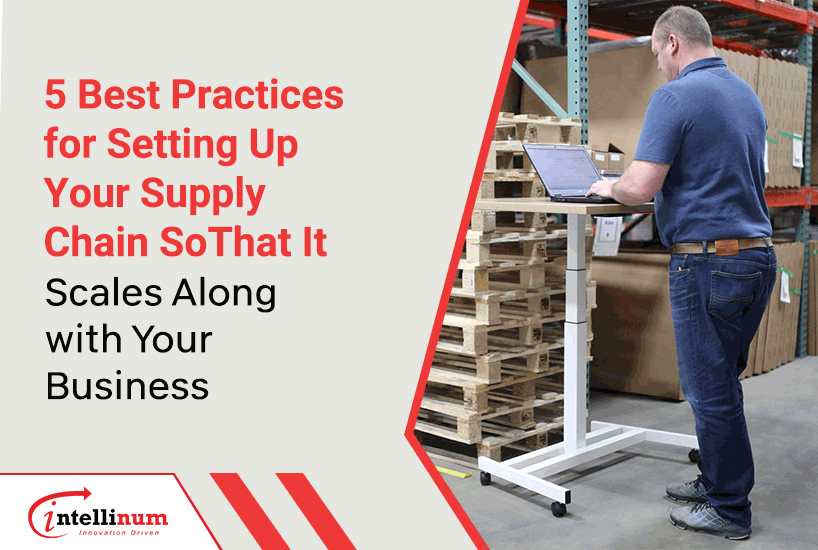
5 Best Practices for Setting Up Your Supply Chain So That It Scales Along with Your Business
Scaling your supply chain can be challenging. There are many processes and stages to consider. This includes the delivery of raw materials, manufacturing of products, and its distribution. Without the right tools and strategy, you can easily lose track of your supply chain as you expand your operations.
According to PWC, 96% of companies with an optimized supply chain achieve better financial and operational results than their competitors. They have more satisfied customers, faster delivery of orders, and inventory turns per year. So, if you want to get ahead of your competitors, it is high time you learn how to improve the supply chain.
With that, here are some of the best practices in supply chain management so that it scales along with your business.
Leverage the Right Technologies
More businesses are leveraging technologies to streamline their supply chain operations. If you have yet to adopt one, now is the right time to explore what technology has to offer to your business. From software solutions, machinery, and devices, there are many options to choose from.
One great example is a supply chain management (SCM) solution. It digitizes your supply chain operation for better management and control. It can also automate certain aspects of your processes such as managing orders, monitoring inventory, and notifying you of your products’ conditions. You can even use it to communicate with customers or key contractors. You can further enhance your experience with the software by integrating it with other solutions such as warehouse management software and an enterprise resource planning (ERP) system.
Ensure Visibility and Transparency
There are so many things to keep track of when it comes to supply chain management. You need to track down raw materials and components from the manufacturers, the actual production and distribution of the product until your products reach your end customers. And as your business grows, it will be more difficult to keep an eye on all these things.
An effective supply chain is all about knowing what is happening during the entire process. Otherwise, you risk encountering delays and issues with your products. Increase your supply chain’s visibility by making information more accessible to everyone involved in the process. Provide a unified data model for your stakeholders such as your managers, teams, and even your manufacturers and suppliers. Having a single source of truth enables everyone to work together with less friction and more trust. It aligns their objectives and gives them an overview of what to expect throughout the operation.
Promote Internal Collaboration
The key to a smooth and seamless supply is collaboration within the supply chain structure. You can promote teamwork by having open and responsive communication within your internal operations. Nowadays, there are tools such as instant messaging apps, dashboards, emails, and video calls to streamline communication from top to bottom of your supply chain management.
You can also schedule periodic meetings to discuss logistics with your team and re-align goals. This ensures that everyone is on the same page and any miscommunications are resolved. You can also work on standardizing and communicating best supply chain practices so that everyone knows what to do.
Coordinate Closely with Key Contracts
Your relationships with your suppliers can have an impact on the scalability of your supply chain. In fact, you can reap many benefits in strengthening your partnerships with them. For one, proving your loyalty to them can help you reduce costs when renegotiating contracts. They may even give you discounts along the way.
Hence, you must closely coordinate with your suppliers if you want to take full advantage of your partnership. Start by always keeping communication lines open between you and your suppliers. But most importantly, you must make sure that you choose the right suppliers for your business. Maintaining a healthy relationship works two-way. If one isn’t putting the same work as you put in the partnership, then maybe it is high time you look for better opportunities elsewhere.
Measure, Review, and Revise Processes
The market is always changing. Your current supply chain management may be working effectively now, but it can get outdated later on. If you are too slow to catch up to the changes, your competitors can easily overtake you from the race.
Keep your supply chain strategy in top form by continuously measuring, reviewing, and revising your processes. By always keeping an eye on your operations, you can quickly determine when is the right time to start switching things up to scale and improve your supply chain. You can use analytics software to give you insights on the strengths and weaknesses of your current system as well as the different trends and demands in the market.
You might also want to know what is PMO (Project Management Office) is and how it can help your supply chain. It is a dedicated department in an organization that focuses on defining and maintaining the standards of your project management. Through PMO, you can standardize best practices in your supply chain and make sure that everyone utilizes them.
A Better Supply Chain
Before you decide to expand your operations, you must first make sure that your supply chain is ready to scale as well. Without the right tools and strategy, you can easily lose control over your supply chain and encounter more issues with your products in the process.
By following these supply chain best practices examples, you can set up an effective and scalable supply chain system that can grow along with your business. You can also check out Intellinum to know more about what solutions you can use to improve your supply chain management.
